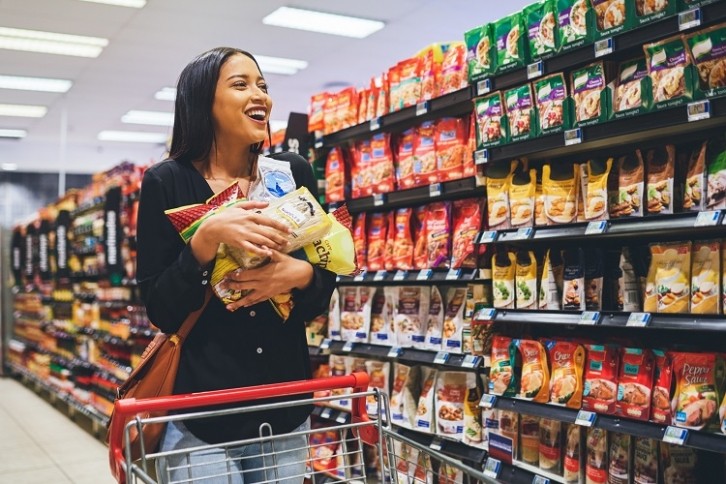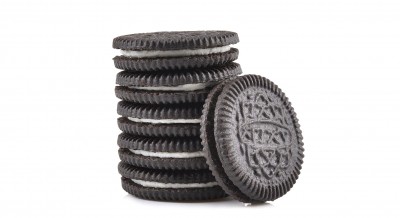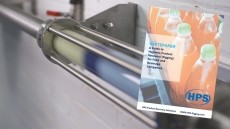Salty snack supply set to grow and diversify in 2024

The annual growth rate for the European snack market is expected to be around 2.5% to 3% until 2025. “Despite rising production costs and labour shortages, the sector remains resilient and is poised for growth,” Sebastian Emig, Director General at the European Snacks Association (ESA), told FoodNavigator.
The salty snack sector witnesses positive growth, largely due to the vast array of products available in Europe and their relative affordability. Over 80% of consumers in the UK and Germany snack between meals, market intelligence company Mintel, found, suggesting Europe has captive snacking markets.
Salty snacks face hurdles in uptake and acceptance. Climate change impacts agriculture, for example, causing potato shortages and affecting supply chains. “Hasty regulation that is not based on science and evidence” is another concern affecting the segment, Emig added.
While affordability remains a paramount concern for salty snack shoppers, today they are also looking for better-for-you options and flavour innovation.
Manufacturers also need to respond to the “constant need for innovation” to meet evolving consumer preferences, especially in flavour and health-conscious offerings. The industry also balances the demand for great taste with improved nutritional content, using high-quality ingredients and novel production techniques.
Budget restraints on snacks
While salty snacks’ price point is considered reasonable compared to other products, rising prices have affected consumers' eating and purchasing habits, prompting shoppers to call for more than cost when it comes to their benefits.
Budget snacks are a key trend in 2024, Mintel identified. Brands need to respond with formulations to navigate rising inflations’ impact on consumer spending patterns and the effect that global conflicts and climate events have on behaviour and demands for new product development.
Economising behaviour is a common reaction to the pricing landscape. In 2024, we can expect to see consumers purchasing more snack multipacks, special offers, and buying from discounters and more own-label products. In response to rising prices, over half of UK snackers have reduced the number of snacks they eat and almost half (45%) of Germans consider salty snacks a low priority for shopping baskets.
Rising commodity and transport prices have forced brands to add these onto consumers via cost hikes, which detracts from their ability to demonstrate their products’ value. However, stretched budgets and less disposable income also correspond with consumers spending less time on out-of-home activities. Brands, therefore, have the opportunity to appeal to consumers’ night-in snacking buys, Mintel revealed.
Selling imperfect snacks using the wonky veg method is hailed as one core way to appeal to consumers and remain a household staple. The approach would help manufacturers save money, prevent waste, and lower shoppers’ price tags.
Supporting a healthy lifestyle
Health and nutrition are high on consumers’ consciousness following the COVID-19 pandemic. As a result, consumers increasingly demand health-promoting snacks, such as those containing natural ingredients, low sugar and high fibre.
The European landscape for salty snacks in 2024 is expected to continue its growth trajectory, with a focus on health and sustainability. “Consumers are increasingly seeking snacks that align with their health and wellness objectives, with a surge in demand for healthier and more sustainable options,” Emig said.
Brands can also focus on developing a perception that snacks go beyond a treat and can positively contribute to nutrition intake. For example, they can position nuts or fruit crisps that support consumers in meeting recommended fruit and vegetable intake.
Nuts, seeds, trail mixes, and plant-based snacks are favourable snacks. The ‘snacking with purpose’ trend is gaining momentum, too, stirring interest from consumers and producers who want to respond to these demands with healthy and sustainable snacks.
Government initiatives such as Germany’s The Federal Ministry of Food and Agriculture (BMEL) and the UK’s high in fat, salt and sugar (HFSS) legislation promote healthier diet and lifestyle choices, providing a supportive backdrop for manufacturers to add better-for-you claims to their formulations and packaging in the salty snacks market.
The arrival and positive reception of Nutri-Score and traffic light labelling systems in Europe has indicated consumers’ appetites for nutrition-dense food. Food labelling systems such as these help consumers by limiting the research and effort needed to find healthier snacks and prompt mindful choices.
Labels like these are trusted, with two in five Germans avoiding foods containing a low nutrition score and six in ten UK adults believing that traffic light labelling is a positive indicator of healthiness. Far from a restrictive measure, adding Nutri-Score or traffic light labels to salty snack items offers producers the chance to be transparent about their products’ nutritional profile, Mintel revealed.
Focus on flavour
Flavour, particularly in targeting treat-based occasions, permissible indulgence and diversifying ingredients will lead new product developments in salty snacks. When searching for snacks for a treat, a third of UK snackers would look for an exciting flavour, Mintel said. Core, familiar flavours, alongside new, unusual variants, will be important to attract consumers.
To stand out on physical and digital shelves, packaging needs to effectively communicate a product’s flavour. Subsequently, brands need to invest in both above the line and in-store marketing. Directing consumers to new flavour launches in snack aisles enables brands and retailers to leverage the impulse element of buying snacks. Limited edition and seasonal flavours appeal to consumers’ senses and the impulse nature of snacking.
Embracing unique and adventurous flavours, limited edition and seasonal variants can drive consumer interest. Collaboration with well-known brands or restaurants for new flavours can also be effective.
Emotional resonance of snacking
“Understanding the emotional reasons behind snacking behaviours is crucial, as many consumers snack to relax or treat themselves,” said Emig. By learning about the emotional reasons why people snack, the food industry can produce snacks and accompanying experiences that are more meaningful and relevant to consumers.
Four out of 10 Brits snack to treat themselves, Mintel found. Emotional appeal is stronger for the Millennial demographic, with two in five snacking to relieve stress and boredom.
Adopting a creative approach in messaging and product development, retailers have the opportunity to reimagine what a snack is and what snacking can mean to consumers, Mintel reported. Versatility and the ability to expand their ability to meet consumers’ demands on various occasions are vital.
Resilient crops
2024 the industry will likely invest more in new production methods and resilient crops against extreme weather conditions.
“The sector is also committed to environmental sustainability, optimising resource use, and promoting sustainable practices from suppliers,” Emig said.
A stable supply of ingredients is crucial to meet the needs of Europe’s growing population. Investment is vital for the industry to find new production methods and resilient crops against extreme weather conditions.
Advancing tech capabilities
Snacking experiences that merge the physical and digital worlds allow salty snack brands to develop an immersive way to introduce the segment to a broader audience and enable brands to pursue greater engagement, Mintel found.
Digital marketing and creating immersive experiences in both physical and digital worlds can help reach a wider audience. Increasingly, the industry will leverage digital experiences, such as engagement in the metaverse.
“The emphasis will be on offering healthier snack options, embracing new flavours, and positioning snacks to fulfil emotional needs,” added Emig.
Opportunities to evolve
Furthermore, in 2024, consumers will look to manufacturers to communicate health benefits and ingredient information. Consumers want snacks with recognisable ingredients, building on the clean labelling trend the industry has seen in recent years. “Reformulation efforts to improve the nutritional composition of snacks while maintaining taste will continue to be a focus,” said Emig.
Consumers’ increasing interest in sustainability and responsible practices also presents an opportunity rather than a challenge. To appeal to consumers’ demands for salty snacks, manufacturers and prospective startups need to centre their developments on innovation in flavours, health-conscious offerings and developing positive connections with their products that will create and maintain a loyal customer base, Emig noted.
























